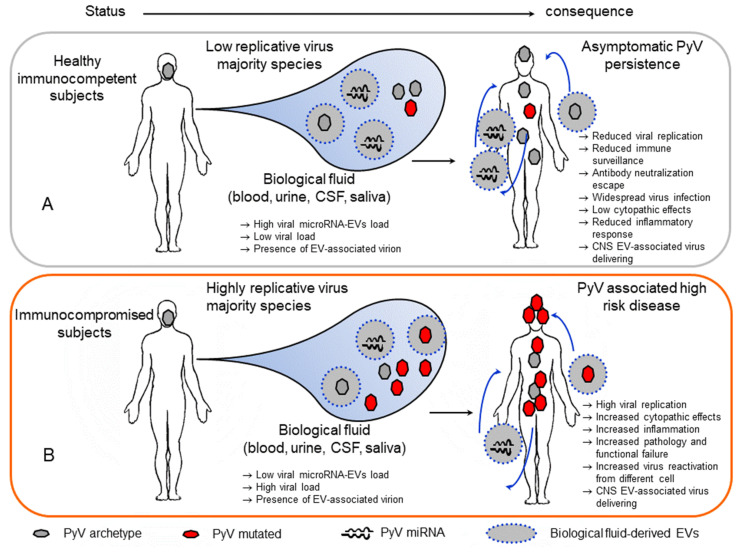Figure 2.
Potential role of extracellular vesicles in polyomavirus infection. (A) In healthy immunocompetent subjects, polyomaviruses persist in different tissues. In these subjects, replication is controlled by immune surveillance, microRNA autoregulation activity on large T-antigen and immune molecules within the host cell. Additionally, extracellular vessels carrying the viral microRNAs produced in infected cells can deliver these microRNAs to a noninfected or infected recipient cell, counteracting viral replication and increasing the downregulation of immune surveillance. Additionally, a few polyomavirus particles associated with extracellular vesicles may be present in the biological fluid and escape the neutralization mechanism, reduce cell cytotoxicity, and cause widespread infection. In this way, EV-associated viruses can be delivered into the CNS. (B) In immunocompromised subjects, reduced immune surveillance induces high viral replication. In this context, extracellular vesicles with produced microRNAs can partially counteract virus replication. Additionally, highly replicative viruses can be delivered into the CNS.

